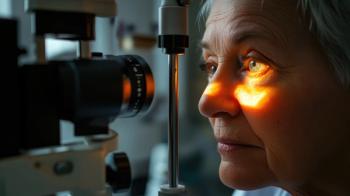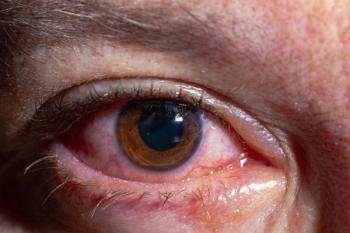
UC Davis Receives $3.6 million Grant for Eye Gene Therapy Research
The UC Davis team is studying a less invasive way of delivering gene therapy to the eye: injecting the gene therapy into the suprachoroidal space, a tiny layer between the white of the eye and the blood vessels that feed the retina.
The National Eye Institute, part of the National Institutes of Health, has awarded a five-year, $3.6 million grant to the UC Davis Department of Ophthalmology to explore a new way to treat vision loss using gene therapy.
The UC Davis team is studying a less invasive way of delivering gene therapy to the eye: injecting the gene therapy into the suprachoroidal space, a tiny layer between the white of the eye and the blood vessels that feed the retina. The researchers will study the treatment method on non-human primates such as rhesus monkeys, which have eyes that are similar to humans. The work involves a collaboration between the UC Davis School of Medicine, the UC Davis School of Veterinary Medicine and the California National Primate Research Center.
“If we can make gene delivery safer and more effective, it could open the door to treating many more patients with blinding eye diseases," Glenn Yiu, M.D., Ph.D., a retinal specialist at the UC Davis Eye Center and lead investigator for the grant, said in a news release.
Yiu and his colleagues will test how to:
- Spread the treatment more effectively to the center of the retina (the macula), which is important for sharp vision.
- Target the right cells, such as photoreceptors and retinal pigment cells, which are often damaged in eye diseases.
- Reduce side effects, such as inflammation, by testing different medications that calm the immune system.
Two gene therapies are already available to treat eye diseases and many more are in development. They are delivered by injecting the therapy either into the jelly-like center of the eye (the vitreous) or under the tissue lining the back of the eye (the retina).
Luxturna (voretigene neparvovec-rzyl) was approved in 2017 to treat inherited retinal diseases with two mutations of the RPE65 gene. It is given as a surgical injection beneath the retina.
More recently, the FDA approved Encelto (revakinagene taroretcel-lwey) to treat the progressive eye disease macular telangiectasia type 2 (MacTel), a rare neurodegenerative disease that causes irreversible vision loss. Encelto uses a small, semi-permeable capsule implanted in the eye that contains allogeneic retinal pigment epithelium (RPE) cells genetically engineered to produce specific therapeutic proteins for targeted disease treatment.
A few of gene therapies are currently in development include:
- ABBV-RGX-314: Developed by RegenXBio, ABBV-RGX-314i is being developed for several retinal conditions treated with anti-VEGF. It is one-time subretinal treatment that includes the NAV AAV8 vector containing a gene encoding for a monoclonal antibody fragment. It is in a phase 2 trial for wet AMD using suprachoroidal delivery, as well as a separate phase 2 trial for diabetic retinopathy using suprachoroidal delivery.
- BGTF-027: BGTF-027 is an intravitreal gene therapy that encodes a functional copy of the long-wavelength-sensitive opsin protein for the treatment of blue cone monochromacy, a rare, inherited vision disorder linked to the X chromosome that occurs in boys. The therapy, which is in a phase 1 trial, was developed by Adverum Biotechnologies and licensed to Blue Gen Therapeutics Foundation, a nonprofit organization developing gene therapies for rare inherited retinal diseases.
- HORA-PDE6b: Developed by eyeDNA Therapeutics, HORA-PDE6b is an AAV5 based gene therapy designed to deliver a full-length non-mutated copy of the functional human PDE6b gene into the subretinal space. It is being evaluated in a phase 1/2 trial for retinitis pigmentosa.
- Ixoberogene soroparvovec (ixo-vec): Developed by Adverum Biotechnologies, ixo-vec is in phase 3 trials to treat wet age-related macular degeneration that is delivered through an intravitreal injection. It is a proprietary vector capsid, AAV.7m8, carrying an aflibercept coding sequence. Aflibercept inhibits VEGF and is the active ingredient in Regeneron’s Eylea, which is approved in both low and high doses to treat patients with wet AMD, diabetic macular edema and diabetic retinopathy.
- MCO-010: Developer Nanoscope Therapeutics recently began a rolling biologics licensing application for MCO-010 severe vision loss due to retinitis pigmentosa.
- OCU410ST: OCU410ST is being developed by Ocugen as a possible treatment of ABCA4-associated retinopathies, including Stargardt disease, an inherited macular degeneration. It uses an AAV delivery platform for the retinal delivery and is in a phase 2/3 trial.
Newsletter
Get the latest industry news, event updates, and more from Managed healthcare Executive.

















































